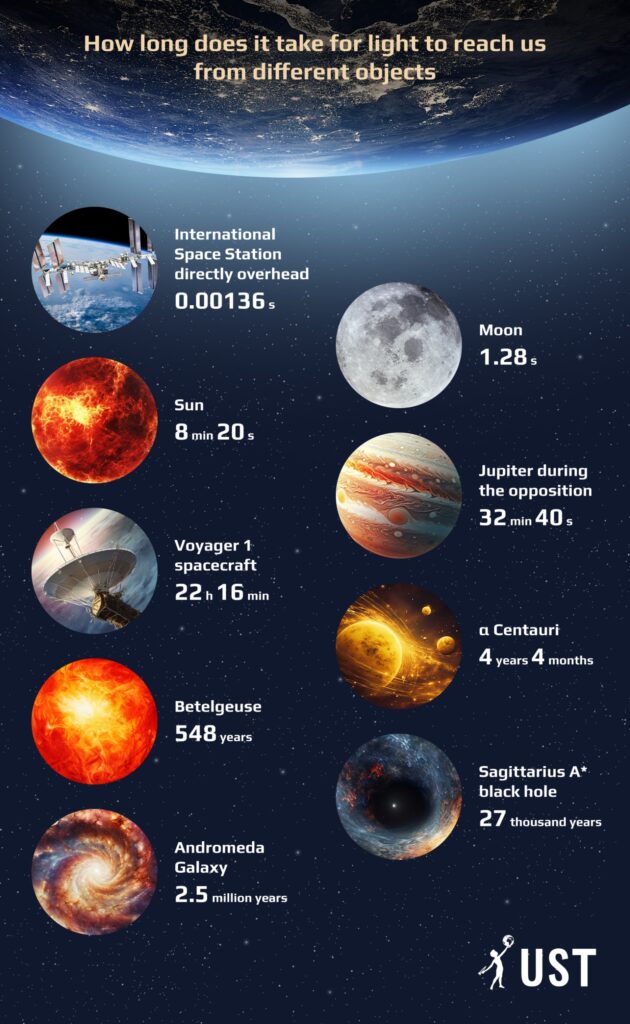If we are talking about something really fast, we can say that it happens at the speed of light. In fact, few people understand how significant this value is and why, in practice, it is extremely difficult for some bodies with significant mass and size to achieve it. We’ll explain it to you.

1. What is the speed of light in a vacuum?
The speed of light is the greatest speed that anything can have in our Universe. Not only electromagnetic waves of the visible spectrum, but also any radiation propagates with it in a vacuum.
This value is exactly 299,792,458 m/s. In 1975, it was determined with an accuracy of one meter, and since 1983, the meter in the International System of Units is the distance that light travels in 1/299 792 458 seconds. Therefore, this is almost the only constant which value will not be specified in the future.
2. Are there cases when the speed of light is lower?
All of the above concerns only the speed of propagation of electromagnetic waves in a vacuum. In an environment that is at least partially capable of dispersing them, it will be much lower. The exact value will depend on the wavelength and the refractive index of the environment.
For example, in absolutely pure water, the speed of light in the visible range is about 225,341 km/s, in glass — 200,000 km/s, and in the sugar — only 192,300 km/s. In the air, it is only slightly smaller than in a vacuum.
3. What is a “light cone”?
The concept of a “light cone” is connected with the speed of light. Every interaction between two objects in the Universe, including the transmission of information, is possible only with the help of particles or waves. And they can’t move faster than light.
Therefore, no event in the Universe can affect other objects in less time than it takes light to overcome the distance between them. For example, an event that occurs on the Moon cannot affect the Earth in any way earlier than a second and a quarter.
For the Sun, this value is already almost 8.5 minutes, for Pluto — about 4.5 hours, for α Centauri — more than 4 years, and for the black hole Sagittarius A* — 27 thousand years. This is called the “light cone”.

4. What happens if you try to reach the speed of light?
Newtonian mechanics tells us that if a force is constantly applied to some body — for example, the momentum of jet engines — then it will accelerate, i.e., its speed will increase. So what’s stopping us from reaching the speed of light?
The Theory of Relativity gives the answer to this. According to it, the closer the speed of a body is to light, the more energy is needed to increase it by the same value for each unit of mass of this body.
In order to accelerate at least some mass to the speed of light, an infinite amount of energy should be applied to it. That is why, in nature, in most cases, only particles with no mass have such a speed — for example, photons.
5. Is it possible for something to move faster than light?
Although physics notes that the speed of light is the limit for a body, there are theories that suggest the existence of particles moving faster than it. These particles are called tachyons — from the Greek word meaning “fast”.
Tachyons have a number of strange properties; for example, their mass is imaginary. That is, it is expressed by a number that is the square root of a negative quantity.
Scientists have no evidence of the real existence of tachyons. In addition, with respect to tachyon particles and fields, there are doubts about whether they are capable of transferring information and whether all of them really move faster than light. However, no one can definitively exclude the possibility of the existence of such a particle.
Follow us on Twitter to get the most interesting space news in time
https://twitter.com/ust_magazine
